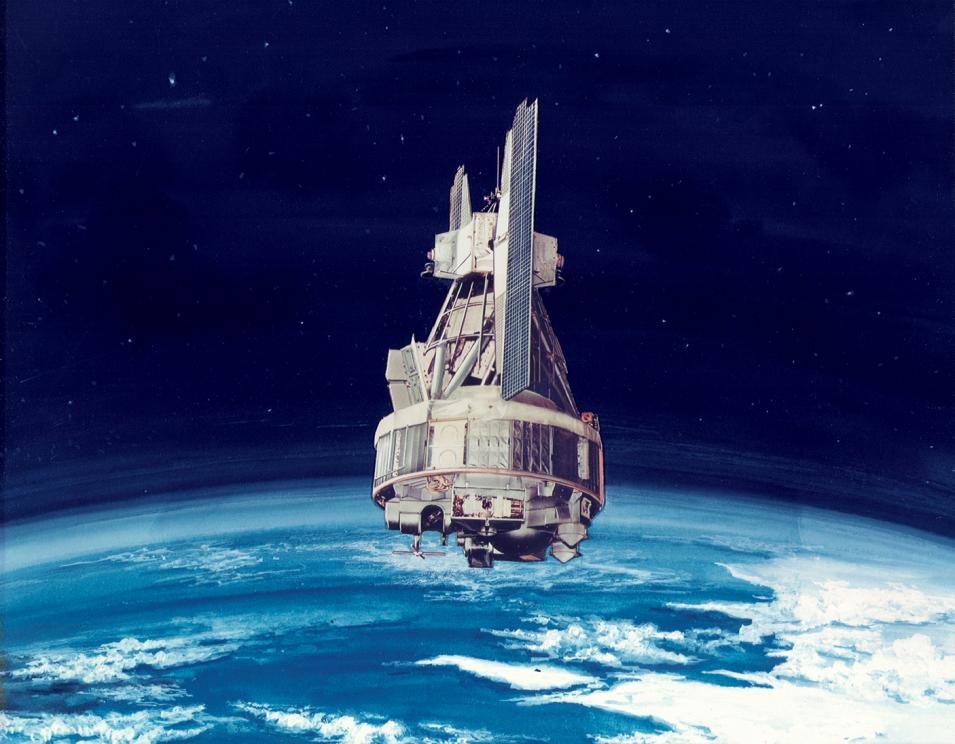Archaeologists hunt for relics in an effort to shed light on the past. For techno-archaeologists, these relics are data, and Dave Gallaher and Dr. Garrett Campbell are in a race against time to uncover data that have not seen the light of day in almost a half-century. They are searching for polar sea ice data collected by NASA satellites launched in the 1960s. It has been a long time since these data were collected and last seen. And time is running out.
You see, data, especially data from the 1960s and early 70s, are fragile. After 30 or 40 years the iron ferrite particles that magnetically hold bits of data can separate from the acetate holding the particles in place on the large data spools used at the time. When this happens, the data can disappear. Forever.
So when Gallaher heard in 2009 that scientists at NASA’s Goddard Space Flight Center in Greenbelt, MD, had successfully recovered high-resolution infrared radiometer (HRIR) data from NASA’s Nimbus I (1964), II (1966), and III (1969) missions, he had an idea.
“I noticed that some of the satellite swaths went over the poles,” says Gallaher, the Technical Services Manager at the National Snow and Ice Data Center (NSIDC), home of one of NASA’s Distributed Active Archive Centers (DAACs) specializing in snow and ice data. “I asked if they could detect sea ice with these data, because one of the major gaps we have in sea ice data is that the sea ice data record starts in 1979. Wouldn’t it be amazing if we could use the data from these early satellite missions to find out what the ice looked like and extend the sea ice record back a full 50 years?”
More than five years later, after manually searching through more than a quarter-million individual Nimbus images with a small team using equipment that is no longer manufactured, these early polar sea ice data are now available at the touch of a button. This is a data success story; a story about bringing dark data back into the light.
Sensing the 60s
From the viewpoint of the 21st century, when a cell phone has more processing power than the computers that helped land astronauts on the moon, it is easy to look back and ask why the data from these early satellite missions were not actively processed, analyzed, and stored as an integral part of the climate record.
As Campbell, the NSIDC scientist who worked with Gallaher on the Nimbus data recovery effort, notes, the primary objective of these early satellite missions was not to collect long-term climate data. “Climate monitoring from satellites really didn’t get started until the mid- to late-70s,” he says. “The original NASA instruments and missions were more engineering missions to figure out how to make measurements and get them distributed the day they were taken so you could look at that day’s weather. The idea of a climate trend or keeping long-term climate records just wasn’t understood as a standard practice back then.”
In addition, the computers of the mid-1960s and early-1970s simply did not have the power to efficiently process and store the amount of data these missions produced. “The Nimbus user guide from 1966 says that this data set is so large and so vast that no one will ever be able to look at all of it,” says Gallaher. “In order to process these data, they had to print out photos and lay them out on a gymnasium floor. This was the only way to look at this stuff. It was hard! At the time, NASA played the data back over a TV screen and took pictures of the TV screen and this became the archival record.”


